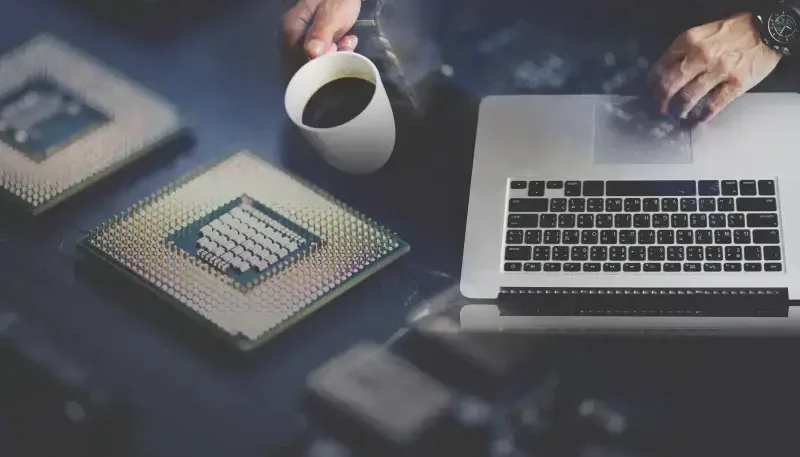In the realm of technology, the partnership between software and hardware is akin to the harmony of body and soul. These two components are the building blocks of every computing system, be it a personal computer, a smartphone, or a data center. To appreciate their significance, one must understand the intricate relationship between them. In this blog, we will explore the importance of both software and hardware and how they work together to power our digital world.
The Role of Hardware: The Backbone of Computing
Hardware constitutes the physical components of a computer or device. This includes the central processing unit (CPU), memory (RAM), storage devices (HDD or SSD), graphics processing units (GPU), and various input and output devices such as the keyboard, monitor, and mouse. Hardware provides the foundation for the execution of software and the processing of data. Here are some key reasons why hardware is of paramount importance:
Performance: The power and efficiency of hardware components directly impact the speed and capability of a system. A robust CPU, ample RAM, and a high-quality GPU can handle complex tasks and deliver fast response times.
Reliability: Well-constructed and maintained hardware is less prone to failures, ensuring the reliability of a system. This is especially important for critical applications and industries where downtime can be costly.
Scalability: Hardware can often be upgraded or expanded to accommodate increasing demands. This scalability is crucial for businesses and individuals as technology needs evolve over time.
Compatibility: Hardware compatibility plays a pivotal role in system functionality. Ensuring that software runs smoothly on specific hardware configurations is essential for a seamless user experience.
Security: Hardware-based security features, such as secure boot and hardware encryption, are essential for protecting sensitive data. They serve as a foundation for software-based security measures.
User Experience: The quality of hardware, including display, audio, and input devices, contributes significantly to the overall user experience. A high-resolution display and responsive input devices can enhance productivity and enjoyment.
The Role of Software: The Brains of the Operation
Software, on the other hand, is the set of instructions and data that tells hardware what to do. It includes operating systems, applications, and programs. Without software, hardware would be a lifeless piece of technology. Here are some key reasons why software is indispensable:
Functionality: Software provides the functionality and purpose to hardware. It enables a computer or device to perform a wide range of tasks, from word processing to playing video games, or managing a network.
User Interface: Software is the bridge between the user and the hardware. A well-designed user interface enhances the user experience and accessibility, making technology more user-friendly.
Customization: Software allows users to tailor their devices to their specific needs. You can install the software you want, configure settings, and personalize your experience.
Updates and Improvements: Software is dynamic and can be updated to fix bugs, enhance security, and introduce new features. This adaptability is vital in an ever-changing digital landscape.
Integration: Software can seamlessly integrate with different hardware components and services. For example, cloud-based software can store and synchronize data across various devices.
Security: Security software, such as antivirus and firewalls, protect hardware from threats and vulnerabilities. This layer of protection is crucial in safeguarding data and privacy.
The Symbiotic Relationship: How Software and Hardware Work Together
While hardware and software are distinct, their interdependence is undeniable. They work together in a dynamic, symbiotic relationship:
Optimization: Software developers optimize their applications to run efficiently on specific hardware configurations. Hardware manufacturers, in turn, create components that can best support the needs of popular software.
Resource Management: Operating systems allocate hardware resources to software processes. The CPU, RAM, and storage are managed to ensure that software applications run smoothly without conflicts.
Innovation: Hardware advances drive innovation in software. For instance, powerful GPUs have enabled the development of advanced video editing and gaming applications.
User Experience: The combination of high-quality hardware and well-designed software results in a superior user experience. Think about the seamless interaction between a smartphone’s touchscreen and its operating system.
Security: Hardware security features, like secure boot, complement software-based security measures, forming a robust defense against cyber threats.
In conclusion, both hardware and software are indispensable components of modern computing. Hardware provides the physical foundation, while software provides the functionality and intelligence. Their symbiotic relationship ensures that technology meets our ever-evolving needs, enabling us to work, communicate, and be entertained in the digital age. To harness the full potential of technology, it’s crucial to recognize and appreciate the intricate interplay between these two pillars of computing.





